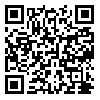Volume 14, Issue 44 (12-2022)
J Crop Breed 2022, 14(44): 103-118 |
Back to browse issues page
Download citation:
BibTeX | RIS | EndNote | Medlars | ProCite | Reference Manager | RefWorks
Send citation to:



BibTeX | RIS | EndNote | Medlars | ProCite | Reference Manager | RefWorks
Send citation to:
Taleghani D, Saremirad A. (2022). Investigation of Genotype-Environment Interaction Effect on Sugar Yield and Determination of Stability of Sugar Beet (Beta Vulgaris L.) Hybrids. J Crop Breed. 14(44), 103-118. doi:10.52547/jcb.14.44.103
URL: http://jcb.sanru.ac.ir/article-1-1363-en.html
URL: http://jcb.sanru.ac.ir/article-1-1363-en.html
1- Agricultural Research Education and Extension Organization (AREEO), Karaj, Iran
2- Department of Agronomy and Plant Breeding, Young Researchers and Elite Club, Karaj Branch, Islamic Azad University, Karaj, Iran
2- Department of Agronomy and Plant Breeding, Young Researchers and Elite Club, Karaj Branch, Islamic Azad University, Karaj, Iran
Abstract: (2092 Views)
Extended Abstract
Introduction and Objective: Sugar beet is a very important agricultural product that is used only professionally in the sugar industry and is considered as one of the most significant sources of sugar production. The yield and quality of sugar in sugar beet is controlled by genotype, environment, and interaction between them. Therefore, the present study was conducted to investigate the effect of genotype-environment interaction on the sugar yield of different sugar beet hybrids.
Material and Methods: The effect of genotype-environment interaction on sugar yield and stability and adaptability of 155 sugar beet hybrids was conducted with one internal control (Sina) and four external controls (Novodoro, Modex, Loriquet, and Pirola). Monogerm hybrids were planted in seven regions of Khoy, Shiraz, Karaj, Kermanshah, Mashhad, Miandoab, and Hamedan in 2020 in an augmented randomized complete design. After harvesting and estimating the sugar yield of each of the experimental hybrids, the stability analysis of this feature was performed using the GGE biplot graphical method.
Results: Stability analysis of sugar yield by GGE biplot graphical method showed that according to the polygonal diagram, Pirola cultivar in Kermanshah and Miandoab, hybrid 96 in Hamedan, Karaj, Shiraz, and Mashhad, and hybrid 11 in Khoy had the highest sugar adaptability and yield. The environments were ranked from the best environment to the most unsuitable environment as Hamedan, Shiraz, Miandoab, Karaj, Mashhad, Kermanshah, and Khoy. The ranking diagram of hybrids based on the ideal hybrid as well as the ranking diagram of hybrids based on mean yield and stability showed that hybrid 96 is the best and most stable hybrid. The study areas were divided into three mega-environments so that Kermanshah and Miandoab as the first mega-environment, Hamedan, Karaj, Shiraz, and Mashhad as the second mega-environment, and Khoy was the third mega-environment.
Conclusion: The results showed that the genotype-environment interaction had an effect on the sugar yield of sugar beet breeding hybrids and caused yield fluctuations from one environment to another. In general, due to the best sugar yield of some hybrids, the selected hybrids were divided into two groups, and a number of them entered the cultivar introduction tests. The rest are evaluated in several areas, and then the best of them is introduced as a cultivar.
Introduction and Objective: Sugar beet is a very important agricultural product that is used only professionally in the sugar industry and is considered as one of the most significant sources of sugar production. The yield and quality of sugar in sugar beet is controlled by genotype, environment, and interaction between them. Therefore, the present study was conducted to investigate the effect of genotype-environment interaction on the sugar yield of different sugar beet hybrids.
Material and Methods: The effect of genotype-environment interaction on sugar yield and stability and adaptability of 155 sugar beet hybrids was conducted with one internal control (Sina) and four external controls (Novodoro, Modex, Loriquet, and Pirola). Monogerm hybrids were planted in seven regions of Khoy, Shiraz, Karaj, Kermanshah, Mashhad, Miandoab, and Hamedan in 2020 in an augmented randomized complete design. After harvesting and estimating the sugar yield of each of the experimental hybrids, the stability analysis of this feature was performed using the GGE biplot graphical method.
Results: Stability analysis of sugar yield by GGE biplot graphical method showed that according to the polygonal diagram, Pirola cultivar in Kermanshah and Miandoab, hybrid 96 in Hamedan, Karaj, Shiraz, and Mashhad, and hybrid 11 in Khoy had the highest sugar adaptability and yield. The environments were ranked from the best environment to the most unsuitable environment as Hamedan, Shiraz, Miandoab, Karaj, Mashhad, Kermanshah, and Khoy. The ranking diagram of hybrids based on the ideal hybrid as well as the ranking diagram of hybrids based on mean yield and stability showed that hybrid 96 is the best and most stable hybrid. The study areas were divided into three mega-environments so that Kermanshah and Miandoab as the first mega-environment, Hamedan, Karaj, Shiraz, and Mashhad as the second mega-environment, and Khoy was the third mega-environment.
Conclusion: The results showed that the genotype-environment interaction had an effect on the sugar yield of sugar beet breeding hybrids and caused yield fluctuations from one environment to another. In general, due to the best sugar yield of some hybrids, the selected hybrids were divided into two groups, and a number of them entered the cultivar introduction tests. The rest are evaluated in several areas, and then the best of them is introduced as a cultivar.
Send email to the article author
| Rights and permissions | |
 |
This work is licensed under a Creative Commons Attribution-NonCommercial 4.0 International License. |





